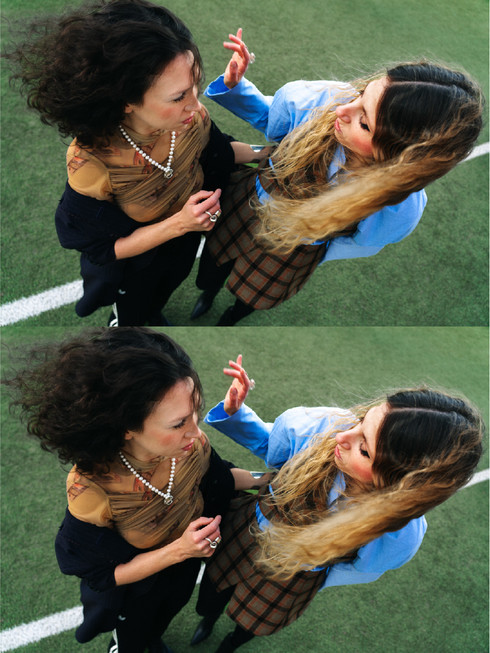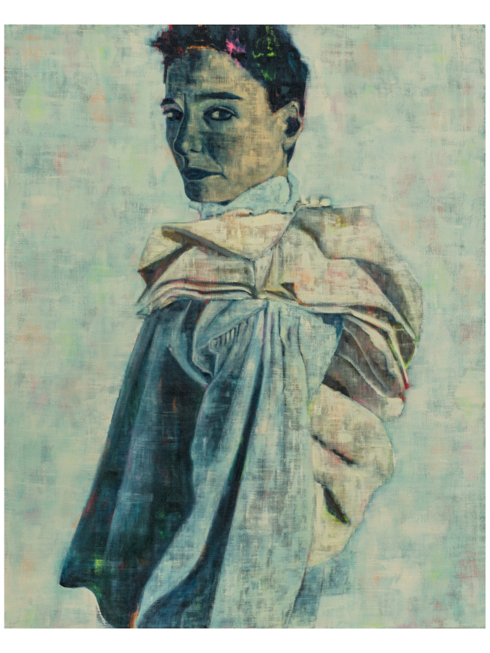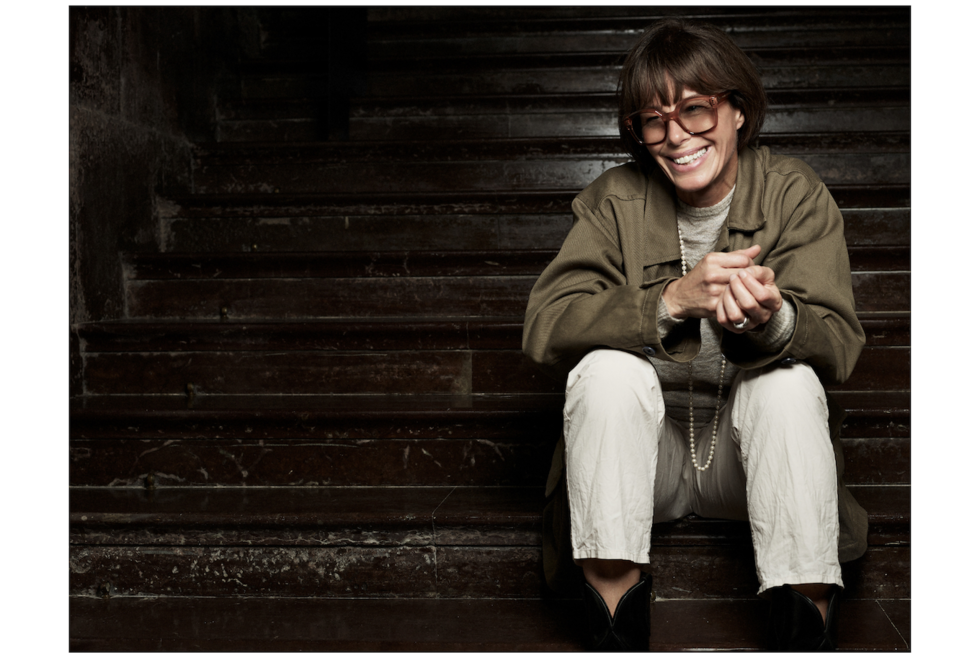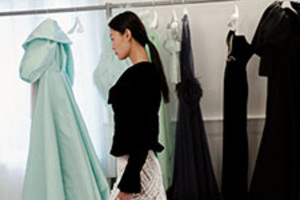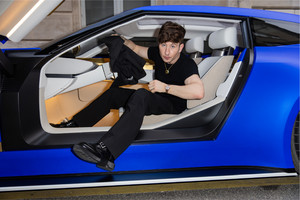Is it Nepotism or Working Amongst Friends? Sanna Fried and Anna Mikaela Ekstrand
Written by Xuezhu Jenny Wang by Nicole MillerNepotism in the fashion industry has long been under scrutiny, from the New York Times roundup titled “Nepo Babies Crowd the Runways” to Kendall Jenner’s 2018 Love magazine interview, in which she infamously said, “I was never one of those girls who would do like 30 shows a season.” In the art world, however, it’s a grayer area. On January 24th, The Art Newspaper reported on “concerns over nepotism row” at the National Portrait Gallery, noting that a photographer exhibiting works at the London gallery had previously made substantial donations to the institution. Responses to the headline vary, yet the majority of Instagram users who commented on this post expressed familiarity with the prevalence of said phenomenon, many arguing that the whole art industry is practically built on friend networks. For a field known for a history of salons, high-society patrons, and tight-knit movements, there is a fine line between connection and favoritism.
Writer and curator Anna Mikaela Ekstrand says that more often than not, the everyday artist or curator adopts some form of “nepotism” not necessarily out of monetary motivations but rather as a result of intellectual exchange or skill-sharing. Ekstrand recalls, “Collaboration has always been central to my work. When I started calling myself a curator, there was a huge boom in curatorial programs worldwide, but not enough work to go around.” This collaborative thinking stemmed from her early experience at the BMW Guggenheim Lab—an urban planning think tank bringing in more than 100 minds—as well as her familiarity with performance artist Ayana Evans’s practice, who would invite colleagues to co-perform at institutional commissions so that everyone can get paid and build their resume. Later, Ekstrand started the online publication Cultbytes to involve and credit as many people as possible. In a similar vein, she has also co-authored Curating Beyond the Mainstream (Sternberg Press) where she examined the collaborative architectural research group BiG (Bo i Gemenskap, or “Live in Community”), and built communities through The Immigrant Artist Biennial.
Artist Sanna Fried shares a similar ethos: “When you collaborate with someone, it’s about merging different fields and relying on each other’s expertise. You cannot trust someone unless you know they are good at what they do.” A friend and collaborator of Ekstrand’s, Fried spent most of her working years in fashion before transitioning to pursue visual arts professionally four years ago. Now, her canvas-based works explore self-representation, narcissism, and the public persona through painterly reenactments of thirst traps, mirror selfies, and exposed bodies. Still, she continues to bridge the two distinct worlds of fashion and art through styling projects, magazine editorials, and more broadly, exploring how expression is manifested through the auto-image—tangible and digital alike. The transition, however, was not without a learning curve.
Xuezhu Jenny Wang: Is this overlap between fashion and art new? Both of you have been working on projects that bridge the two fields—what are some differences you have so far observed?
Anna Mikaela Ekstrand: It’s quite new to me. We live in a world where hierarchies and boundaries are constantly blurred. But at the end of the day, these are two different industries—fashion caters to a broader market.
So far, I’ve done about five fashion editorials to bring artists a more “mainstream” clout. In an exhibition, my job of a curator is to give artwork primacy and create a dialogue among the artworks. In an editorial setting, I involve stylists, hair and makeup artists, photographers, and creative directors—asking them, “How do you interpret this artist? How does their work inspire you?”
Sanna Fried: It feels liberating to move towards the art scene from the fashion world. My art is highly inspired by my years in fashion, and I like to return to my roots. But painting is something that gives me the ultimate satisfaction. While my work in both fields is about the same kind of desire to express things, working in fashion was a lot about the commercial and making money. Translating these images into paintings makes me feel like I can focus on the messages better.
XJW: What does your friendship mean for your respective careers?
AME: We have a constant conversation on WhatsApp, talking about her career and my new editorial projects. Recently, Sanna has been so incredible in helping me figure out the different ways of communicating in fashion. For instance, the mood board is so important to fashion editorials, and Sanna explained the concept to me.
SF: And likewise, at first, I didn’t know what an artist statement was. Anna Mikaela had to explain it to me.
XJW: Do you communicate with each other differently as collaborators versus as friends? Are there disagreements from time to time?
SF: I actually think we communicate in a softer way when working together. Privately, we can be pretty direct to each other. Of course, in creative projects, there are more people than just the two of us involved. A lot of the work is about coordinating who’s whose contact; you reach out to this person, and I reach out to that person.
AME: We both trust and respect each other. Even when there are things I don’t agree with, I trust her taste—Sanna has an incredible eye—understand that her ideas are good, choose my battles, and move on. Team work makes the dream work; hence our photoshoot, not only playing together but also being prepared to clean each other's messes, quite literally.
SF: And between the two of us, we have very different skillsets. Anna Mikaela is like a human ChatGPT. She writes better than AI. I’m never going to interfere with what she writes, and likewise, she won’t interfere with what I paint.
XJW: Speaking of your paintings, Sanna, could you share more about your exhibition at Engelbrekt Cathedral in Stockholm?
SF: The show in Sweden is actually a continuation of the paintings I did two years ago about my grandmother, Hédi Fried, a Holocaust survivor. Actually, the entire series was painted in Mexico City, so the process was strongly influenced by Mexico and Mexican female painters like Remedios Varo. My grandmother traveled constantly and spent a lot of time in Mexico. When researching for the exhibition, I found so many photos from her travels there. It was a really special process.
AME: You’ve spoken about how she sometimes prioritized her public role as a proponent of human rights over her personal life. You and your father, for example, have both continued your grandmother’s legacy, which naturally connects to this theme we are talking about today.
XJW: Does collaboration between friends count as nepotism?
AME: To me collaboration lives within the realm of nepotism. When I look at my own projects, there’s a lot of nepotism there, in the sense that I often choose my friends to be my collaborators. But I do so because I’ve worked with them before, and sometimes it’s hard to go out with a public call as many of my projects don’t have a lot of funding. This format of collaboration has kind of shaped what the art world looks like and just becomes natural.
It’s important to recognize that you don’t have to be born into certain circles to gain access—you can build connections yourself. Friendship and community can be more important than family ties.
SF: Definitely, it’s not just your blood family, but also your chosen family.
This interview has been edited for clarity and length.

